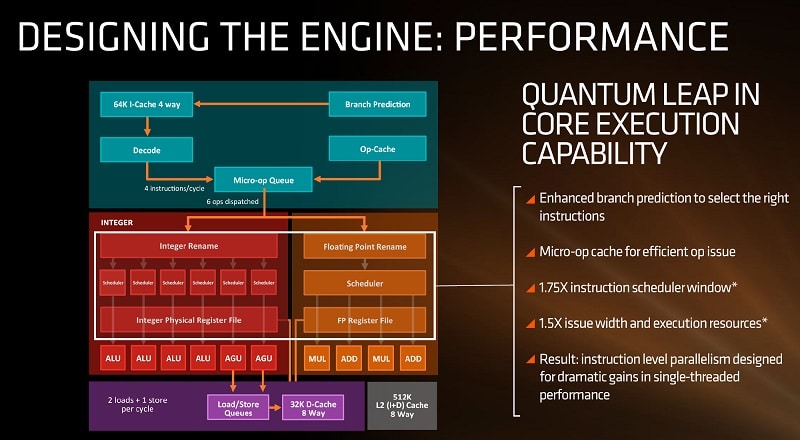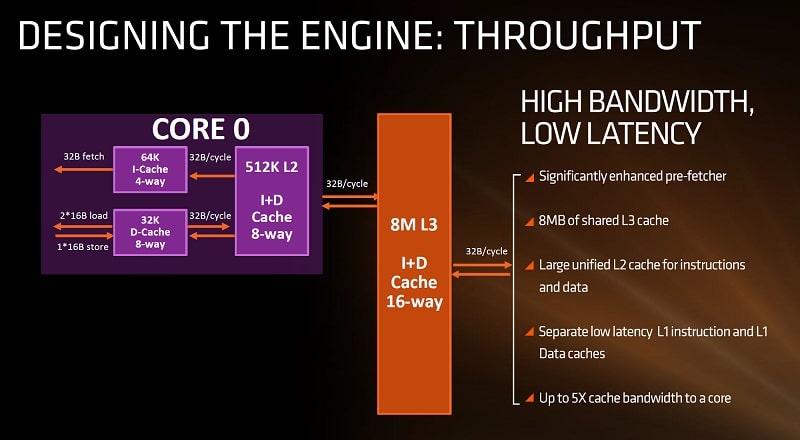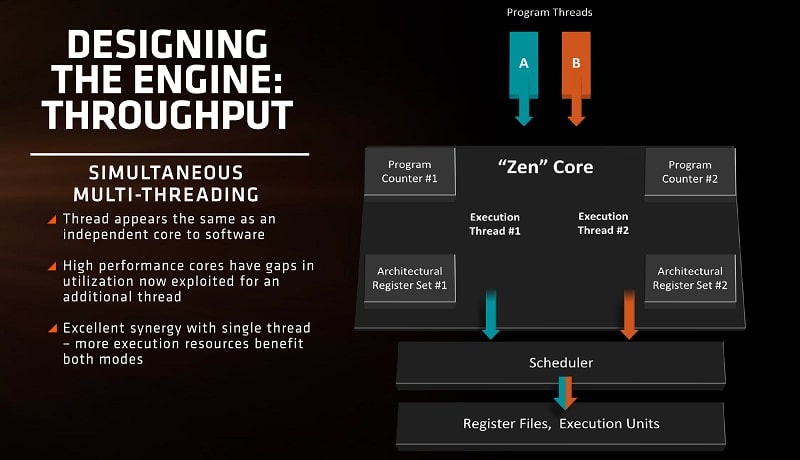AMD Reveals Core Details at Zen Event
Samuel Wan / 8 years ago

One of the most anticipated releases for the past while have been AMD’s new CPU architecture. Dubbed Zen, the new design is set to revitalize the companies flagging efforts and bring stronger competition against Intel once more. While we’ve seen some leaked information that has already given us insights into the new chips, AMD dropped a major bomb today. At their latest event, AMD has not only provided a new timeline but also revealed the fundamentals of Zen.

Starting off, we have some major changes in the works. First up is the new micro-op cache which will hold frequently used operations. This buffer should reduce latency and requests to the cache. In line with this, the decoder can now feed 4 instructions per cycle. This keeps it the same as Intel and Steamroller but is doubled compared to Bulldozer. Being able to feed more instructions to the execution units is critical to increasing IPC so this is likely where many of the 40% IPC gains are coming from.

The next step of course, is improving the cache. Bulldozer used a write-through cache which slowed it down significantly and increasing latency. With Zen, the new system is write-back which will speed up cache response times. While the cache sizes for L2 and L3 stay the same per core, we can expect them to be more useful than in the past. The L1 caches sizes also get a boost in size. The only downside is that for Zen chips more than 8 cores, the cache won’t be coherent, with each set of 4 cores sharing 8MB of L3. I expect there will be a bus or interconnect to better enable communications between different core clusters.

Last of all, we have the new simultaneous multi-threading, AMD’s answer to Intel’s Hyper-Threading. Unlike the sharing of resources seen with Bulldozer, the new technique will be more akin to allowing a secondary thread make use of core resources not required by the main thread. How performance plays out remains to be seen as even with Intel’s implementation, certain workloads see massive gains while others may even regress.
The big disappointment of the day was that Zen wouldn’t be available in volume till 2017. This dashes all hopes that Zen would arrive in late 2016 as rumoured and make it in time for the year-end. While we might see a few enterprise targetted releases, consumer chips are likely out of the question. Hopefully, the 40%+ IPC gains do come true and make it worth the wait. What we will see though are AM4 motherboards so we have at least those to look forward to this year.



















